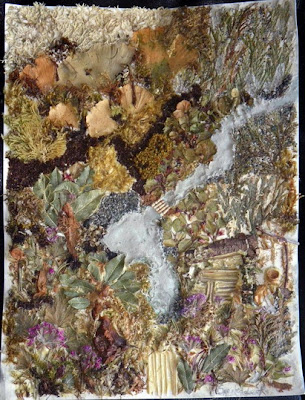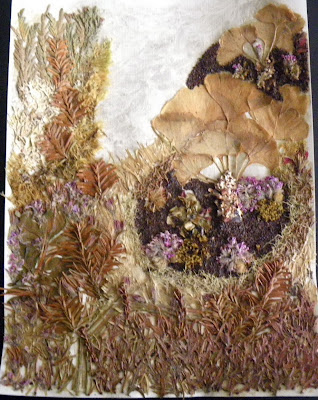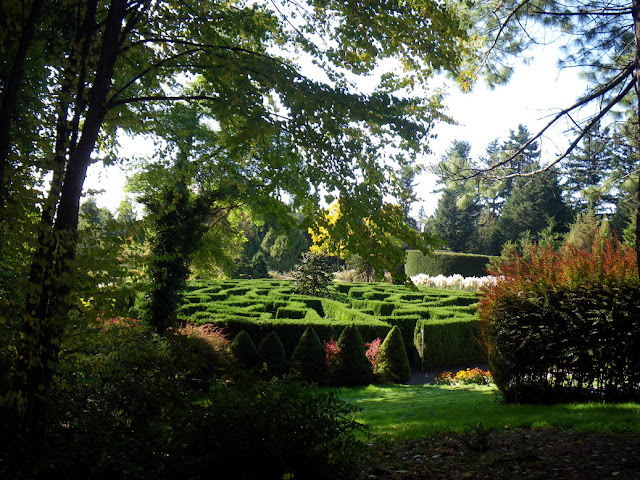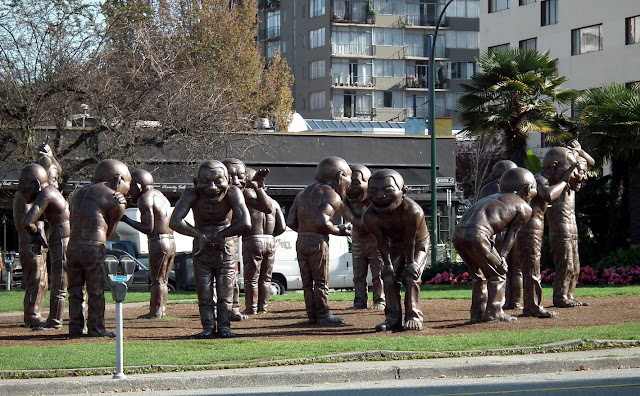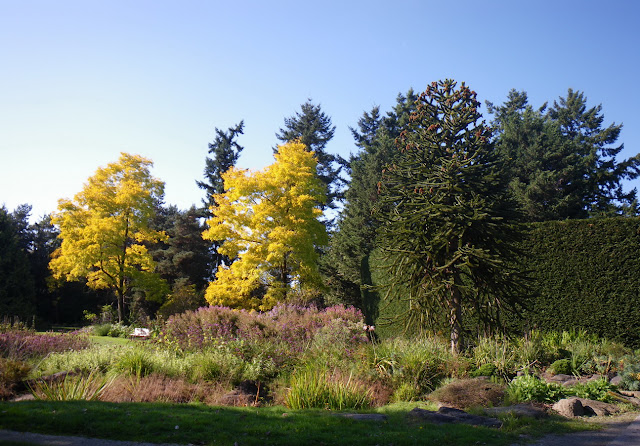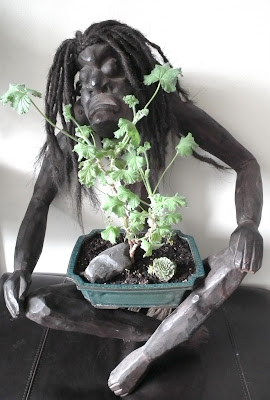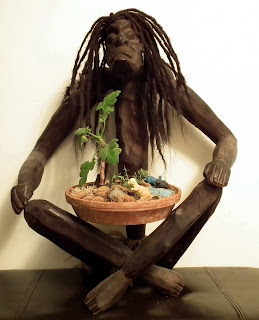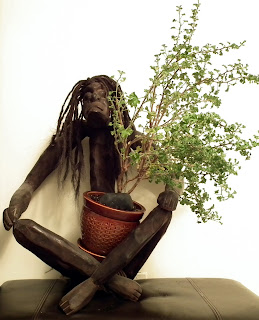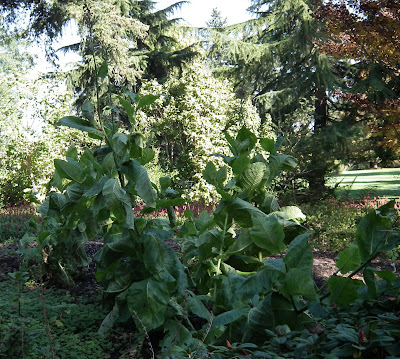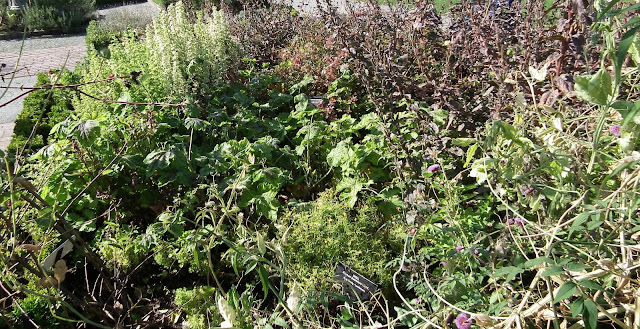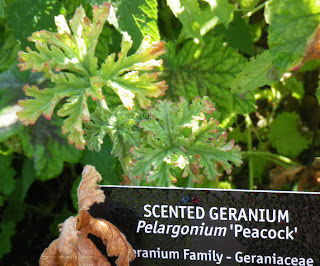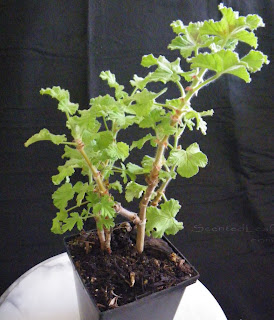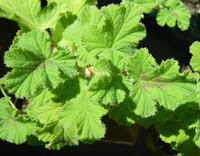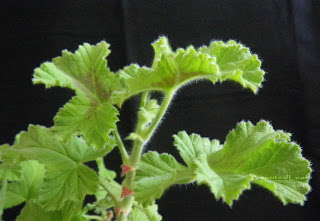VanDusen Botanical Garden is perfect place to enjoy the scenery, taking pictures and gain knowledge about plants. The garden covers 22 hectares of land which includes water features, many trees and plants from all over the world, a restaurant, gift shop and seed library.
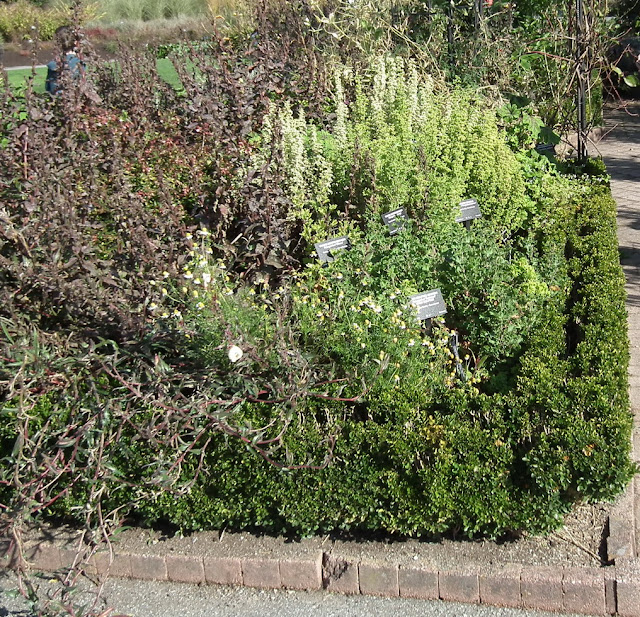 |
| Fragrance Garden at VanDusen Botanical Garden |
There are so many different thematic gardens within the garden, with plants carefully organized and labeled: Mediterranean, Formal Rose Sino-Himalayan, Perennial, Southern Hemisphere, Heather and Fragrance Garden, Rhododendron Walk, Meconopsis Dell, Laburnum Walk.
The Fragrance Garden is situated near the entrance and I was happy to find here some of the Scented Pelargonium (Geranium Family - Geraniaceae) plants which I already had in
my collection: Citrosa, Prince of Orange,
Attar of Roses.
 |
| Prince of Orange |
Lots of flowers, herbs and aromatic plants are still beautiful and smell great,
although the Fall has made its presence felt all over the botanical garden. The changing colors of autumn leaves are just great!

The flower beds with scented pelargoniums seemed impressive, with rare specimens like: Pelargonium Nervosum (Lime Scented Geranium), Peacock, Shottesham Pet (aka Filbert, Concolor Lace), Prince Rupert, Old Spice, Torrento and Bontrosai TM, and other "common" specimens with Apple, Nutmeg, Orange and Lemon scented foliage mixed with a vast array of aromatic plants like: dill, parsley, onion, lovage, cilantro, mint, heliotrope, allium and thyme. The Fragrant Garden also includes: Viola adunca, Valeriana, lemon scented Crimson, Nicotiana, Catnip, Sage, Chamomile.
The pictures are lovely although most of the bloom season is over.
 |
| Pelargonium Nervosum |
 |
| Shottesham Pet |
Shottesham Pet (aka Filbert Geranium, Concolor Lace) has lovely light green, lobed leaves with heavy ruffling on the edges and hazelnut scent.
Pelargonium Nervosum (aka Lime Scented Geranium) has small, smooth, deep green, sharp-toothed leaves.
 |
| Apple scented Pelargonium Odoratissimum |
Apple Scented Geranium (Pelargonium odoratissimum) – has soft, gray-green leaves and a refreshing apple scent. It looks great in a hanging basket.
Pelargonium Peacock has deeply lobed, rounded leaves with patchy white / pink variegation and delightful rose scent.
 |
| Old Spice |
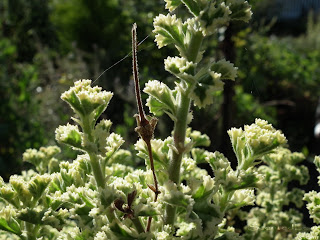 |
| Prince Rupert with seed |
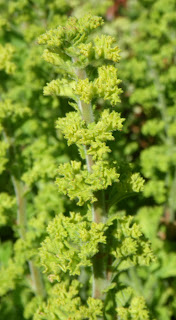 |
| Fingerbowl lemon |
Variegated Prince Rupert (Pelargonium Crispum) is a stunning, upright variety that has small, curly leaves, rounded with crinkled edges. The foliage is green with yellow edging and citrus scent.
Pelargonium x fragrans "Old Spice": Dwarf plant, similar to Nutmeg scented geranium , is a compact plant with soft, nut scented leaves, perfect for containers or hanging baskets.
Pelargonium "Fingerbowl Lemon" (Pelargonium Crispum) is small, but vigorous growing scented pelargonium which has tiny, ruffled leaves,with an intensely lemon scent.
Pelargonium "Bontrosai" (Lemon Sculpture) has strong lemony scent and tightly curled leaves. I was very surprised that this scented geranium is trademark of Richter's Herb and protected by U.S. patent. All the right are reserved and unauthorized propagation is prohibited.
What do you think about that?
A living plant should be patentable?
